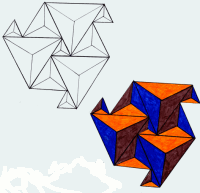

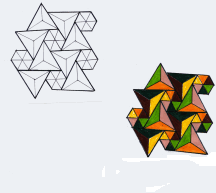



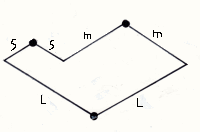 | repeatunit in P3 |
 | repeatunit in P4 |
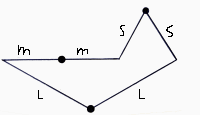 | repeatunit in P6 | |
| There are 3 values in the outlines of the repeatunits: S, M and L. The value M always equals L-S. In the repestunit, the values L, M and S are connected to the three types of rotationaxes we discriminate. In a stripe course, an M-event always occurs between two L-events. The S and |M values are exchangable. This means that in some cases the S-values are connecting the t2-fold rotationaxis in the outline of the repeatunit and in other cases the M/value. When the S/L-ration is greater than 1/2, the S-values are connecting the rotatationaxis; when the S/L-ration is smaller than 1/2 the M-values provide for tyhe connection. |
|
Each level in the continued fraction has its own L, M and S values, as shown in the example beneath: 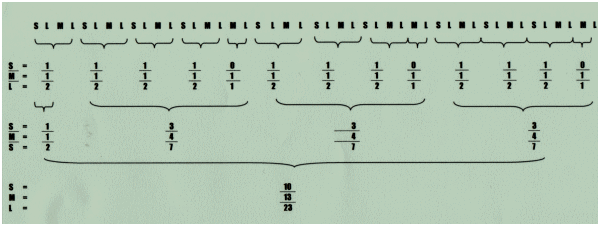 |
|
In each of the repeatunits the lattice-structure si divided in, we tolerate but one orientation of the line-motif. The results of this division of orientation of direction is thwe occurance of strip-courses or stripcircuits. | ||
| In each of the three symmetry types, the unit generates a stripecourse with a closed character
, as shown beneath. In these examples, for P4 and P6 the length-units with a value M are not drawn in. They
play no role in the ' steering' of the stripcourse, because the course traverses these lenght-units
under right angles, thus not influencing the course of the strip. But to get fully grasp on patterngeneration, one should take acount of the M-values
| ||
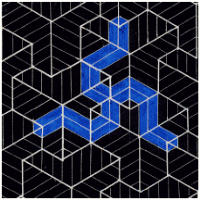

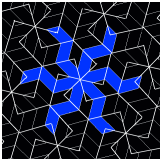
| ||